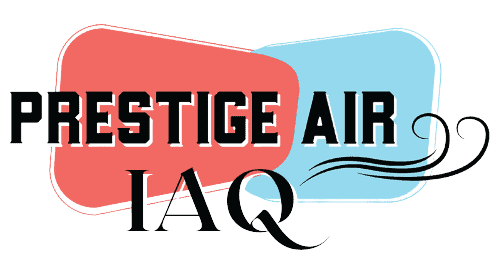Worst Indoor Plants for Allergies: Avoid These 5 Choices for a Healthier Home
Indoor plants are a popular choice for decorating homes and offices. They not only add a touch of natural beauty but also offer numerous health benefits. However, for individuals who suffer from allergies, selecting the right indoor plants becomes crucial. While many plants can purify the air and promote well-being, some may trigger allergic reactions and worsen symptoms. In this article, we will explore the worst indoor plants for allergies, helping you make informed decisions to create an allergy-friendly environment.
What Are the 5 Worst Indoor Plants for Allergies?
Understanding Allergies and Indoor Plants
Before delving into the worst indoor plants for allergies, let’s briefly understand what allergies are and how indoor plants can impact them. Allergies occur when the immune system overreacts to substances in the environment, known as allergens. Common indoor allergens include dust mites, mold spores, and pollen. Indoor plants release pollen and volatile organic compounds (VOCs), which can exacerbate allergy symptoms in susceptible individuals. By selecting the right plants, you can minimize the risk of triggering allergies.
- Worst Indoor Plants for Allergies: Ficus
Ficus plants, also known as weeping figs, are popular indoor plants due to their aesthetic appeal and air-purifying properties. However, they produce a significant amount of pollen that can irritate allergies. Additionally, the sap of ficus plants contains a latex-like substance that can cause skin reactions in sensitive individuals. If you have allergies, it is advisable to avoid keeping ficus plants indoors. - Worst Indoor Plants for Allergies: Peace Lily
Peace lilies are known for their elegant white flowers and ability to thrive in low-light conditions. While they are often recommended for improving indoor air quality, peace lilies can be problematic for allergy sufferers. The pollen released by these plants can trigger respiratory allergies, causing symptoms such as sneezing, coughing, and watery eyes. If you have a pollen allergy, it is best to steer clear of peace lilies. - Worst Indoor Plants for Allergies: Snake Plant
Snake plants, also known as mother-in-law’s tongue, are revered for their resilience and ability to survive in low-light environments. However, they can be problematic for individuals with allergies. Snake plants release a significant amount of pollen, which can trigger allergic reactions. Additionally, snake plants produce oxygen at night, which can disrupt sleep for some individuals. If you have allergies or sleep issues, it is advisable to avoid keeping snake plants in your bedroom. - Worst Indoor Plants for Allergies: English Ivy
English ivy is a popular choice for hanging baskets and wall climbers, thanks to its lush, cascading foliage. While it can add a touch of natural beauty to your space, it can also worsen allergy symptoms. English ivy releases airborne allergens that can trigger respiratory allergies, especially in individuals with asthma. If you have allergies or respiratory conditions, it is best to avoid keeping English ivy indoors. - Worst Indoor Plants for Allergies: Rubber Plant
Rubber plants are beloved for their glossy, burgundy leaves and ability to thrive in various lighting conditions. However, they can pose problems for individuals with latex allergies. Rubber plants contain latex, which can cause allergic reactions in sensitive individuals. Symptoms may include skin rashes, itching, and difficulty breathing. If you have a latex allergy, it is advisable to avoid keeping rubber plants in your home or office.
Creating an Allergy-Friendly Indoor Environment
While the aforementioned plants may be problematic for allergy sufferers, it’s essential to note that not everyone will react the same way. Allergies vary from person to person, and some individuals may tolerate these plants better than others. However, if you are prone to allergies or have family members who are, it is wise to opt for plants that are less likely to trigger allergic reactions. Here are a few tips to create an allergy-friendly indoor environment:
- Research and Choose Low-Allergen Plants: Before purchasing indoor plants, conduct thorough research to identify plants that have low allergenic properties. Look for plants that have minimal pollen production and do not release volatile organic compounds (VOCs). Some examples of low-allergen plants include spider plants, Boston ferns, and Areca palms.
- Consider Non-Flowering Plants: While flowers are visually appealing, they are often the main culprits for triggering allergies. Consider opting for non-flowering plants that primarily rely on foliage for aesthetics. These plants are less likely to release pollen and cause allergic reactions.
- Maintain Proper Indoor Plant Care: Proper plant care is essential for reducing the risk of allergies. Regularly clean the leaves of your indoor plants to remove dust and potential allergens. Use a damp cloth or sponge to wipe down the foliage. Additionally, avoid overwatering the plants, as excessive moisture can promote mold growth, another common allergen.
- Provide Adequate Ventilation: Proper air circulation is crucial in minimizing the buildup of allergens indoors. Open windows and use fans or air purifiers to improve indoor air quality. This will help remove airborne allergens and maintain a healthier environment for allergy sufferers.
- Consult an Allergist: If you or your family members have severe allergies, consider consulting an allergist for personalized advice. They can perform allergy tests to identify specific triggers and provide recommendations on suitable indoor plants based on your sensitivities.
5 Worst Indoor Plants for Allergies Conclusion
While indoor plants offer numerous benefits, including aesthetic appeal and air purification, individuals with allergies need to be cautious when selecting plants for their indoor spaces. Plants such as ficus, peace lilies, snake plants, English ivy, and rubber plants are among the worst indoor plants for allergies due to their potential to trigger allergic reactions. By opting for low-allergen plants, practicing proper plant care, and ensuring adequate ventilation, you can create an allergy-friendly indoor environment. Remember, everyone’s allergies are unique, so it’s crucial to pay attention to individual sensitivities and consult with a healthcare professional if needed.







